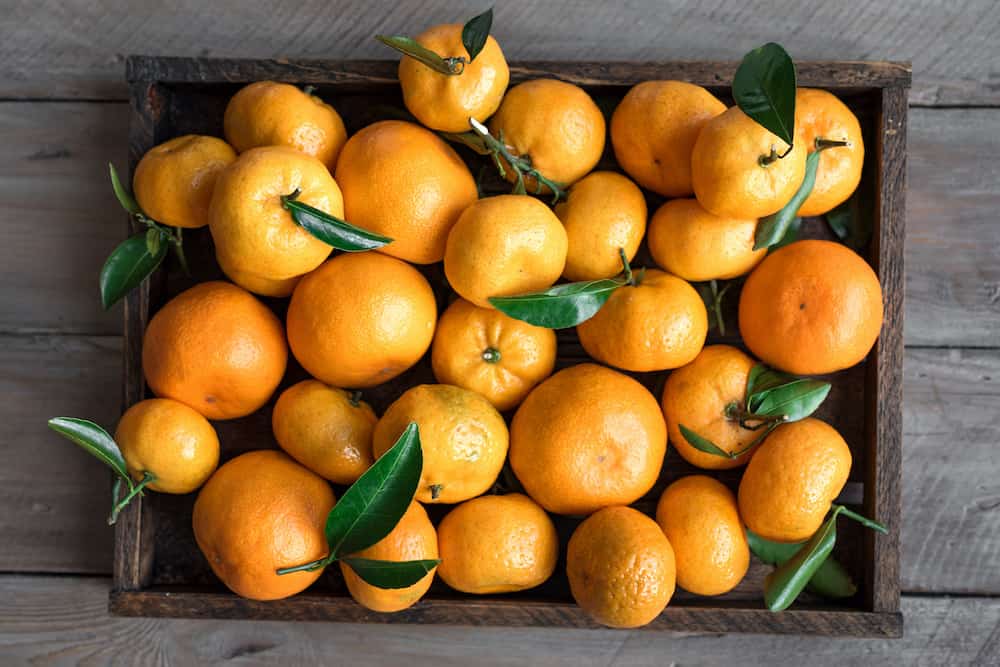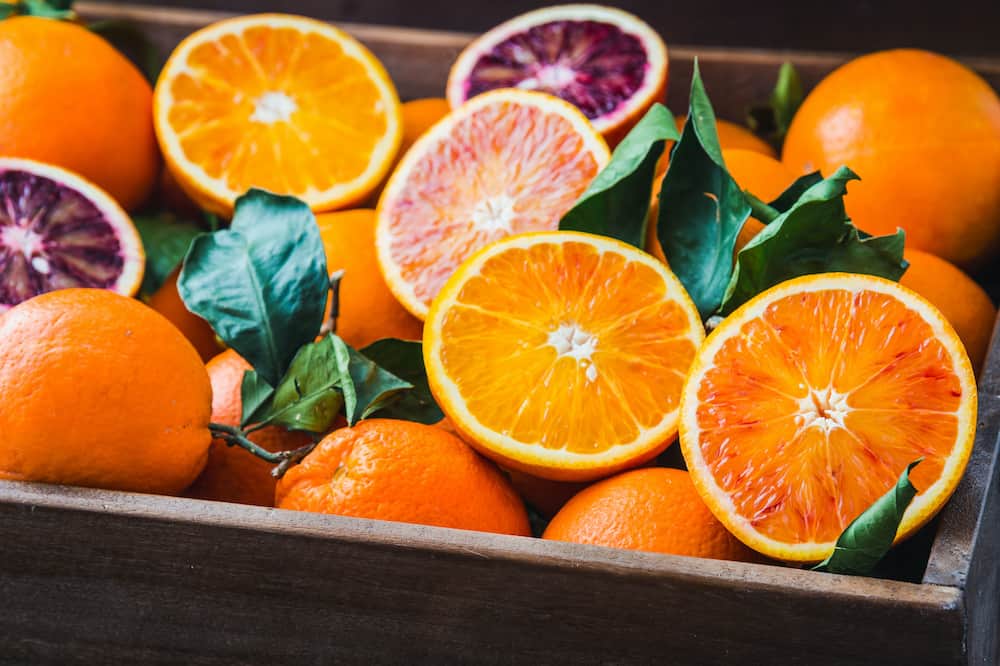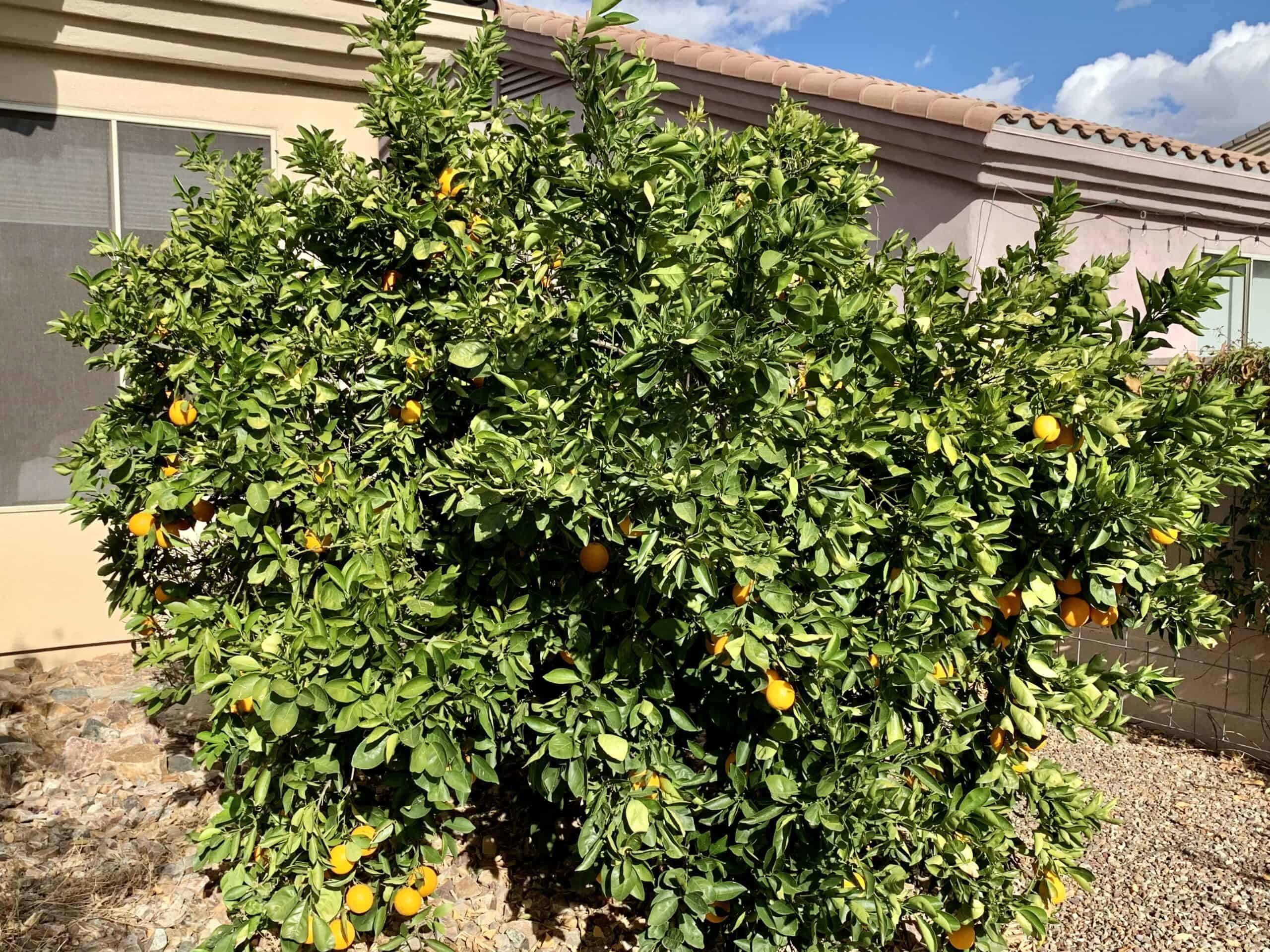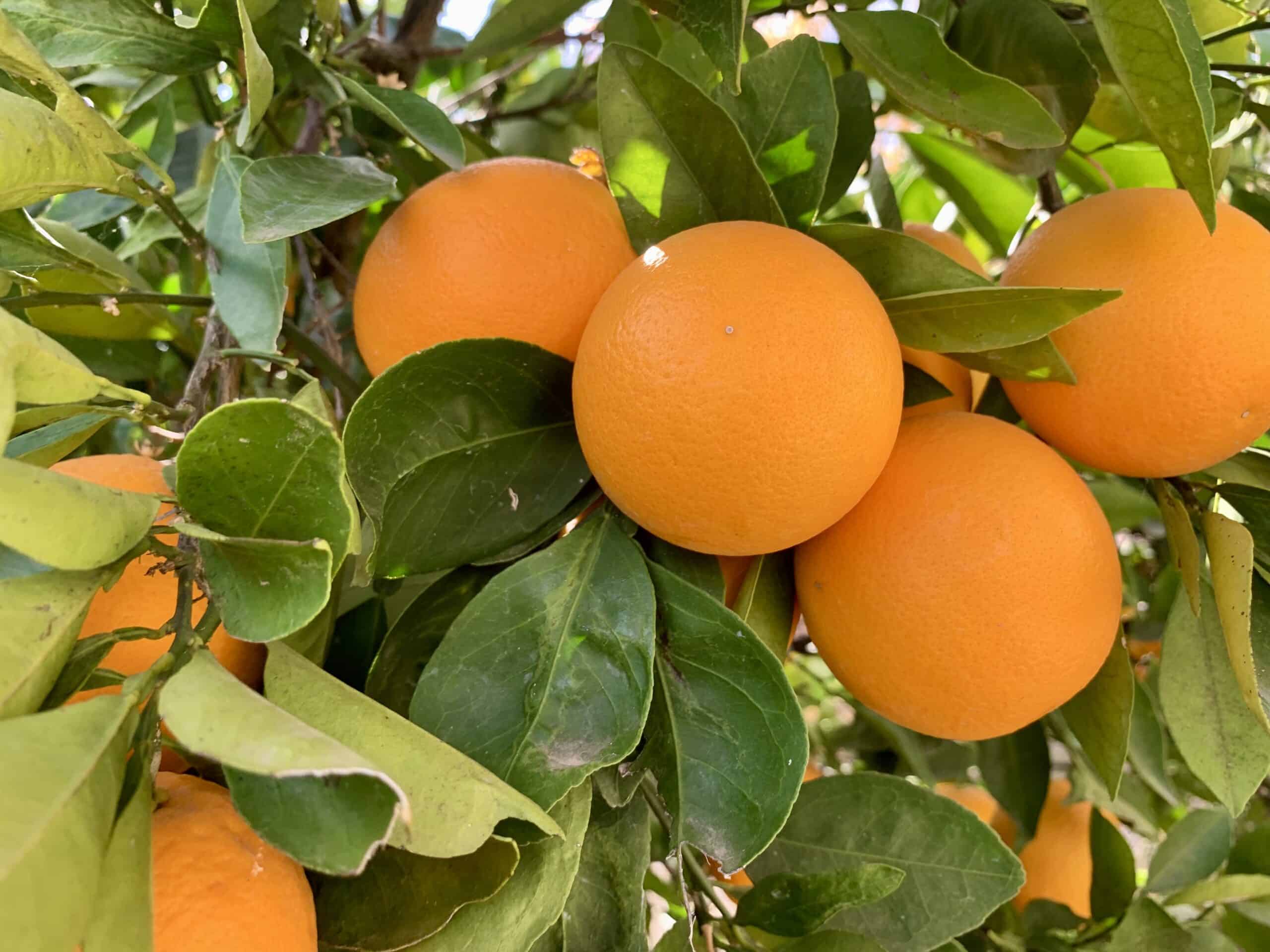Many types of oranges make delicious snacks and ingredients throughout the year. As they are widely available, it can be beneficial to know what they can bring to your homestead.
Although there are many varieties of oranges, all of them come from two categories. You’ll be able to choose between bitter oranges (C. Aurantium) and sweet oranges (C. Sinensis).
Sweet oranges are frequently seen as the better option, as they are one of the most delicious citrus fruits. In this guide, we’ll explore different orange varieties available, where they come from, how to grow them, and the benefits they offer.
History of Oranges
Interestingly enough, there is some debate as to where oranges originated from. Some sources suggest oranges were first grown in China, while others say they were grown in Southeastern Asia. You can even find oranges mentioned in texts dating back to 1450 in the Mediterranean.
It was a prevalent fruit among aristocrats who loved it for its sweet taste and luxurious fragrance.
Traditionally, different types of oranges were often used for medicinal purposes, as they somewhat are today. As a phenomenal vitamin C source, they can boost your immune system and ward off ailments like scurvy.
Throughout Europe, you would find that most Mediterranean traders would have significant numbers of oranges to trade.
How Many Varieties of Oranges Are There?
There over 400 varieties of oranges that you can find worldwide. Although we are most accustomed to common navel oranges, there are plenty of others to consider.
Knowing how many varieties of oranges are there is only the beginning. You’d need to learn about the most common ones if you wish to find the right variety to grow in your homestead.
What Are the Different Names of Oranges?
If you are wondering what are the different names of oranges, you’d be in for a treat. They come in many different types, each with its own name. For the sake of this guide, we’ll explore the most popular oranges you can find.
Sweet Varieties
Who doesn’t love picking a sweet orange right off the tree? These are types of oranges commonly used for eating, cooking, and making juices.
1. Common Orange
Common oranges typically include Valencia and Hamlin oranges. They’re perfect for eating in several ways, whether it be raw or juiced. Most store-bought orange juice is made from common oranges, as they’re grown in warm climates.
Valencia oranges are famous because of the fruity and vibrant flavor that makes them exceptional for juice.
Hamlin oranges are also useful for juicing and eating raw, especially as they have a sweet yet tangy appeal.
2. Blood Orange
Out of all of the sweet oranges, blood oranges have a unique appearance. Their deep red flesh is a natural mutation resulting from higher amounts of anthocyanin.
You’ll also find that these fruits’ rind will have a red tint to them and are native to Spain.
The flavor of blood oranges is unique, as well; they resemble orange and have a berry twist to them. For example, Spanish Sanguinelli tastes a little like cherry.
Blood oranges are delicious when juiced and eaten raw, but they’re also commonly used by mixologists. By taking its sweet juices, you can create unique and sweet cocktails. They’re also an exceptional ingredient for syrups, desserts, and even salads.
3. Navel Orange
In the 19th century, navels became quite popular as a mutation from common orange trees. They received their name from a unique indentation on the outside that resembles a bellybutton.
Navel orange trees can grow as high as 30 feet, though there are some varieties of dwarf trees. You’ll typically find navel oranges in USDA Hardiness Zones 9 and 10.
Their growth rate is mid-level, but they provide an impressive number of fruits during their early fruiting season.
One of the most considerable advantages of these oranges is they’re easy to peel, with segments that are also easily separated.
They’re a fantastic mid-day snack and pair perfectly with desserts and salads. Also, they have an unforgettable citrus scent that makes them even more appealing. The two most popular types of navel oranges are Washington and Fukumoto.
4. Cara Cara
Another one of the varieties of navel oranges that you can find at a grocery store is cara cara. It will be labeled as a red navel or a pink navel, depending on where you live.
This fruit was discovered in 1976 in Venezuela, and its flesh is quite similar to grapefruit but tastes completely different.
Cara cara is primarily known for its delectable sweetness that also contains a hint of berry flavor. However, the berry isn’t as noticeable as in blood oranges.
5. Acidless Orange
As you would guess, acidless oranges have very minimal traces of acid, which is what makes them the sweetest option. However, because the acid isn’t available as a preservative, they also have a short shelf life.
You’re highly unlikely to find acidless oranges in a grocery store, but you could source them at a farmer’s market. They’re best suited for eating raw but can also be used to make juice. Some varieties are lima acidless, orange of heaven, and Rio Farms vaniglia.

6. Mandarin Orange
Mandarins are scientifically known as Citrus reticulata, meaning they’re not technically oranges. However, they are the parent plant to most oranges we can buy today.
Mandarins are smaller in size, making them easy to tell apart from other varieties, such as naval oranges.
Also, mandarins are easy to spot because they have an actual orange color. Within the mandarin family, you’ll be able to find clementines, tangerines, and satsumas.
7. Clementine
You may wonder, “Are clementines and oranges the same thing?” Technically, they are two different varieties of citrus fruits.
They’re the smallest type of mandarins and have a straightforward peel to work with. When you get to the flesh, the sweet flavor of clementines is what sets them apart.
Clementines originated from North Africa and were brought to North America in 1909. They fruit relatively early and will produce several fruits, even with limited access to heat.
You’ll love enjoying them on a warm summer afternoon or as a delicious treat for kids. People often put clementines in holiday stockings which is why they are referred to as Christmas oranges.
8. Tangerine
It’s easiest to tell tangerines apart thanks to their dark red-orange skin. Similar to clementines, their skin is easy to peel, but the texture is more pebbled. They’re sweet, but not as sweet as clementines.
9. Tangelo
The tangelo is an excellent option if you want to get a little unique with your selection of sweet oranges. It’s a cross between a pomelo and tangerine, which gives it an incredibly sweet flavor with extreme juiciness.
You’ll also find it’s known for its lower amounts of acid, which is why they’re one of the best “oranges” for juicing.
The only issue you might encounter with these fruits is that their rind is incredibly hard to peel. If you prefer to eat your oranges raw, you can easily find another type of orange that’s less tricky to work with.
10. Satsuma
Satsuma is rare to find in grocery stores because of how easily they can get damaged in transit. They have fragile skin, which makes them prone to bumps, cuts, and bruises.
For the same reason, you’ll find they’re one of the most straightforward fruits to peel when you need a snack.
One of the enormous advantages of satsumas is that they are exceptionally juicy and sweet. They also don’t contain any seeds, which makes them an easy-to-eat treat.
Bitter Orange Varieties
You’ve likely heard of many sweet varieties, but bitter types can be equally as useful. Although they are a little more challenging to source, bitter oranges are great for cooking and fragrance.
1. Bergamot Orange
If you’ve purchased a spring or summer candle in the past, you might have noticed bergamot as an ingredient. It adds a fresh and rejuvenating citrus scent to perfumes and natural household cleaners.
Although it’s far too sour to eat raw, you might also consider using the peel for cooking or tea.
2. Trifoliate Orange
Trifoliate is typically used as rootstock to help sweet orange trees grow to their best ability. They’re also a trendy type of orange for landscaping, as they grow on hedges.
When touched, you’ll appreciate their fuzzy texture that is softer than most other oranges.
3. Seville Orange
By combining pomelo and mandarins, Seville orange trees can be created. They’re small and sour oranges that are typically three inches wide and have a generally round appeal.
Their rind is thick and dimpled with more of a yellowed orange hue and a thick white pith beneath it.
Seville oranges have a dark orange flesh that is highly acidic. Like other oranges, you’ll have 12 separate segments; however, they are packed with large seeds.
It’s highly unlikely anyone would eat Seville oranges raw; however, they are phenomenal for baked goods and cooking. Also, Seville oranges are frequently used when crafting marmalade.

What Are Big Oranges Called?
If you’re wondering what are big oranges called, navel is one of the largest that comes to mind. Navel oranges are known for their size, as they can grow as large as five inches in diameter.
They’re also one of the most common oranges you’re bound to find in your grocer thanks to their thick rind. These oranges have an exciting history that makes them one of the more unique varieties.
History of Navel Oranges
In the 1800s, the navel orange came to be from a mutation of the selecta orange tree. At the bottom of the rudimentary fruit, a second fruit grew, which caused it to be seedless. They noticed a small hole similar to that of a bellybutton on the bottom, hence its name.
By the late 1800s, the fruit was introduced to Florida’s hot climate and California. This process led to the creation of Washington navel oranges and dwarf Washington navel oranges.
What Are Small Oranges Called?
The smallest oranges you’re bound to find at the supermarket are mandarins. With their three subspecies, you’ll have quite a selection of small fruits to add to your collection.
Mandarins pack a powerful punch, as they can be exceptionally flavorful and sweet. They’re the perfect addition to Asian-inspired salads and dishes.
However, they can also be enjoyed as a separate snack instead of consuming a full-size orange.
To know what are small oranges called, you have to look at the three main types, which are mandarins, tangerines, and clementines.

How Do You Grow Oranges?
If you have a homestead, opting to add some orange trees to your orchards can be hugely beneficial.
Not only will your family be able to enjoy the fruit, but you can share them with your neighbors and friends. Most people decide to use starter trees you can purchase at your local nursery or garden center. If you live in USDA hardiness zones 8 – 11, you should find them. They will also be available in the spring in home improvement stores such as Home Depot, Lowe’s, etc. My local Costco sells mandarin trees and clementine trees.
Purchasing orange trees locally from a nursery will help ensure they are suited to your region. You will also benefit from asking for help choosing a location. They will know your microclimate and can offer suggestions for soil, etc.
What Orange Varieties Grow in a Pot?
Dwarf orange trees, also called miniature orange trees, grow well in pots. They will stay small.
If you don’t live in a climate suited to growing citrus (climate zones 8 – 11) you can opt to grow one indoors. With enough light, you can have a thriving dwarf tree. Put it outdoors in the spring, after the last frost. It will benefit from natural sunlight for spring through fall. Bring it indoors again before the first frost.
Growing orange trees in a pot is an excellent option for homeowners with south-facing windows. As long as the trees have access to bright sunlight, the fruit’s sweetness will be very notable.
A few of the best sweet oranges that you can grow indoors include:
Dwarf Washington Navel
As its name suggests, this version of Washington navels is much smaller. You can sporadically harvest the fruit through fall and winter, and it produces a substantial amount of oranges.
Also, Washington navels are among the most massive oranges available, so it’s well worth the effort.
Mandarin
One of the most considerable benefits of growing mandarins in your home is that their trees are small and disease-resistant.
You’ll also find it has beautiful white flowers that add an ornamental feeling to the tree, making it more appealing.
Valencia
Similar to dwarf Washington navel oranges, valencia orange trees are incredibly small and easy to maintain. Not only are they disease-resistant, but they are also pest-resistant, which makes them great for indoors.
With a very versatile type of orange, you’ll love having valencia oranges at your disposal.
How Do You Care for Orange Trees
There are three main things your orange trees need for success: water, fertilization, and pruning.
Water
The amount of water your trees will need depends on yearly rainfall and the climate you’re in. Most farmers find that you should frequently water your trees to prevent them from wilting. Also, a watering schedule helps you to control irritation during the fall.
Depending on the plant you have, the density of your watering may change.
On average, you can expect your orange trees to need at least one inch of water weekly. You might need to consider adding an extra inch, depending on the heat in your area.
Our suggestion is to consider collecting rainwater to make your farm even more sustainable. Also, using rainwater is a far less expensive way to maintain your orchards.
Fertilization
The fertilizer that you choose will have a significant impact on how the fruit grows. For example, nitrogen can make the peel more oily, while potassium makes the peel less oily.
To cultivate the highest number of fruits, add up to two pounds of nitrogen yearly to each tree.
You can expect to combine several essential nutrients to create the perfect fertilizer mixture. You’ll likely need to use phosphorus, potassium, and micronutrients to ensure the healthiest fruit. Alternatively, you can find spray fertilizers to apply to the leaves annually.
Pruning
As with any plants you own, pruning them ensures they remain healthy. With orange trees, you’ll have to pay close attention to dead or dying branches.
You’ll have to regularly trim away dead branches that are less than a foot away from the ground.
What Orange Varieties Are Best?
There are different types of oranges to add to your homestead that bring health benefits and profits. Finding the best ones will depend on your needs, as some are better for raw consumption while others are for fragrance.
Regardless, they’re simple fruits to grow and maintain, especially as they’re self-pollinating. You can grow orange trees with a lime tree, lemon trees, kumquat and other citrus fruits. They will cross-pollinate but it won’t affect the oranges. It will only affect the seeds which shouldn’t be replanted to grow oranges.
Osage Orange Tree: What You Need to Know
Mulberry Tree ~ The Mighty Berry Producer

